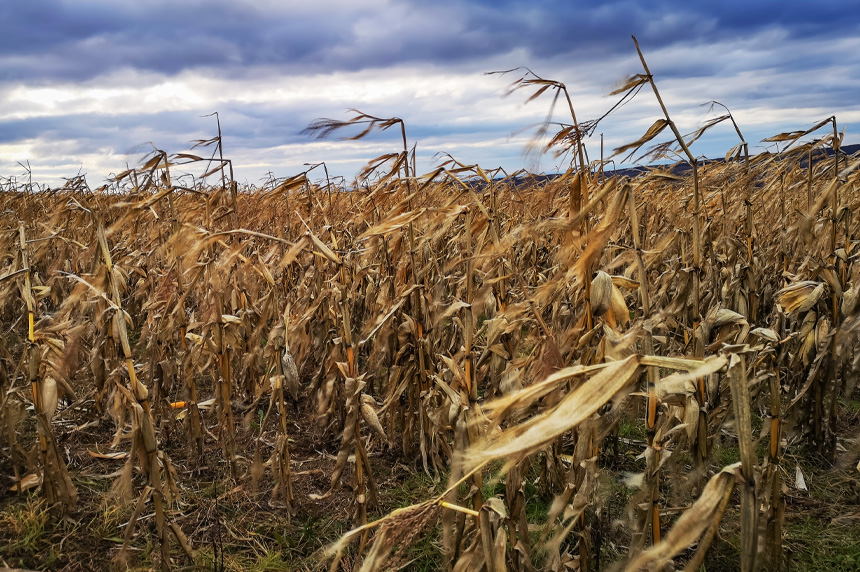Stay up to date with the latest OSINT news from around the world
Attacks on Ukraine’s agricultural sector reveal Russia’s plot to disrupt Ukraine’s role as a leading grain producer with the potential to threaten the food security of not just Ukrainians but the millions who rely on its exports. The conflict is shaping up as the most well-documented war in history, thanks to the availability of satellite imagery, GPS data, social media and the dedication of amateur sleuths.
Meanwhile, new satellite imagery is leading researchers to believe China will soon launch a new aircraft carrier, and scholars are documenting how social media is fueling violent extremism. Here is the OSINT news you need to know about this week.
The most documented war in history
Russia’s war in Ukraine ignited a surge of OSINT sleuths on Twitter, Telegram and across the internet. Now some Russian soldiers face accusations of war crimes with evidence gathered online. Thanks to social media, the prevalence of commercial satellite imagery, GPS data and other publicly available information, the war has become the most thoroughly documented conflict in history, with professional analysts and amateur investigators alike taking note of what goes on.
Identifying and collecting evidence of war crimes and perpetrators can help future prosecution efforts in international criminal court. However, OSINT can just as easily be utilized by Russian military members as it can by Ukraine’s allies. Balancing the efforts to hold Russia’s military actions accountable while keeping Ukrainian defenders safe continues to be an ongoing strategy on the part of Ukraine’s military.
“The holistic system of photos from social media, text messages from group chats, public government data, and aerial photography – all can be analyzed by the means of artificial intelligence and therefore used for military or investigative goals.”
— Ukraine Crisis Media Center
“Launch imminent” of China’s new carrier
China’s new advanced aircraft carrier has been spotted and documented thanks to satellite imagery. Analysts have taken note that the latest satellite images show the carrier’s dry dock as being partially flooded — meaning the launch of the Type 003 carrier is likely soon. Experts have noted consistent patterns of activity with previous launches observed via satellite imagery beyond the flooding of the dry dock, including decoration along catapults and flags around the perimeter.
The drydock at Jiangnan is getting flooded with the Type 003 inside. Launch looks like its imminent as early as tomorrow.
— Alex Luck (@AlexLuck9) June 14, 2022
Via "escobar" at SDF. pic.twitter.com/H2btIIb0V4
President Xi Jinping has been overseeing a massive overhaul to upgrade and modernize the Chinese military. The aircraft carrier is the latest in a long string of new weapons of war being built. While the launch seems likely, The Drive notes the carrier will not likely be fully operational for some time. New aircraft carriers take time to dial in and perfect for service.
“The Type 003 carrier is a key centerpiece of the Chinese government's efforts to not only expand and improve its overall military capabilities, but also its ability to project that power further beyond the country's borders.”
— Joseph Trevithick, The Drive
From battlefields to wheat fields
Russia isn’t just attacking Ukraine’s military bases and cities. It’s also attacking the agricultural infrastructure of one of the world’s top exporters of wheat, corn, barley and sunflower oil. Ukraine is often referred to as the “breadbasket of Europe” due to its substantial grain production. The assault on Ukraine’s fields and production facilities not only affects the country’s ability to supply food within its own borders, but also to the world – more than 400 million people, according to CBS’s Face the Nation – that depends on its exports.
A satellite image from April 15, 2022, suggested a planned attack on a dairy farm near Kharkiv, Ukraine. The area surrounding Ukraine’s second largest city has suffered substantial attacks, including in many agricultural fields. Ukrainian President Volodymyr Zelensky has accused Russia of trying to “deliberately provoke a food crisis,” a move of concerning resemblance of the Holodomor of 1932-33. While military might is often measured on the battlefield, some scholars suggest paying attention to the wheat fields as well.
“Although some attacks on Ukraine’s agriculture are unplanned casualties of the war, these attacks and others like it illustrate that, in direct violation of the Geneva Convention, Russia is using food as a weapon of war.”
— Caitlin Welsh, et. al., Center for Strategic & International Studies
Social media & extremism
Social media can be used as a tool to fuel extremism by terrorist groups. The Islamic State in Syria (ISIS) used it for recruitment, first and unexpectedly with kittens, before they became infamous for streaming beheadings. The videos of jihadists cuddling with their cats helped garner sympathy for the group in the propaganda efforts. While the ISIS Twitter account is no longer active, its role as a recruitment tool serves as a cautionary tale.
Whether it’s domestic or international, extremist groups now utilize social media for everything from recruitment to planning attacks to desensitization of violence. Some people and groups use it to broadcast their attacks. The mass shooter in Buffalo publicly posted a manifesto, citing motivations and extremist thinking, leading up to the attack. Perpetuation of conspiracy theories also creates fertile ground for extremists to recruit and spread their message, of which memes play a crucial role for spreading misinformation. The 2018 attack on the Pittsburgh Tree of Life synagogue was reportedly inspired by antisemitic conspiracy theories. The dark power of social media in spreading these ideologies is something scholars and analysts are keeping a close eye on.
“When accounts are suspended for disseminating extremist content, users quickly pop back up with new accounts.”
— Bridget Johnson, Homeland Security Today
Every other week, we collect OSINT news from around the world. We continue to keep a close watch on Russia's war in Ukraine, especially on Twitter. We’re also gathering information on cyber threats, federal intelligence strategies and much more. Find us on Twitter and share the OSINT news you’re keeping up with.
To keep up to date on the latest OSINT and cyber security news, visit authentic8.com/blog.


